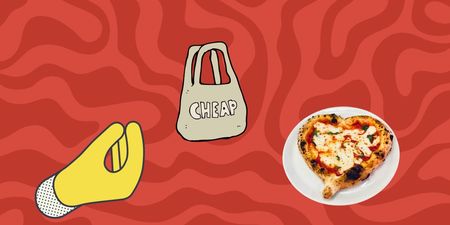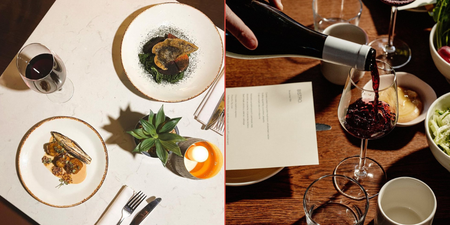If there’s one thing Dubliners have grown accustom to, it’s fantastic asian food. Thanks to the likes of Saba and their wonderful resident chef, Tao, we no longer have to travel far and wide for fantastic Thai or Vietnamese cuisine, with great restaurants popping up around the city, the food has finally come to us. But considering how much we enjoy such flavoursome food when eating out, if you’re a dab hand with a set of knives and a blender, chances are you’d love to try it at home. As Thai food enthusiasts, we went straight to the professionals here in the hopes of learning a few simple tips when trying this at home.

Supermarket shopping can be a daunting task when you’re facing a wall of various ingredients and brands. What would you say are the essential ingredients to have in your pantry/cupboard for most Thai & vietnamese dishes?
Fish Sauce(Nam Pla), Oyster Sauce, Light/White Soy sauce, Shrimp paste, Tamarind, Lime Juice, Coconut milk, Curry paste, chilli oil in paste, jasmine, rice noodles.
When it comes to herbs and spices, which ones are key players for this kind of cooking and which ones will we find in most Asian dishes?
Garlic, chilli, birds-eye chilli, lemongrass, galangal, holy basil, sweet basil, kaffir lime leaf.
Right, off to the Asian market we go, so. How important is it to cook with fresh ingredients as opposed to dried or frozen?
You will know immediately if a dish does not use the freshest ingredients. The style of cooking demands that they are fresh. Just watch our chefs at full tilt. The roar of the gas flame as it’s turned to full power, the searing sizzle of oil hitting the wok, the scoops of freshly chopped garlic, chopped birds eye chillies, ginger and galangal and their enveloping aromas consuming all of your senses. Fresh prawns, Thai aubergine, bamboo shoots, lemongrass, torn kaffir lime leaves, string beans and peppercorns. A quick stir. A slurp of fish sauce, a pinch of sugar, a ladle of chicken stock. The manic rattle of the wok as the elements contained mingle and fuse. A handful of sweet basil. Done. The urgency, the healthy barely cooked fresh vegetables, the complexity yet rustic simplicity of flavours, textures and colours as they jump of the plate. Yes, only ever use fresh ingredients!
Beautifully put. Now talk to us about fish sauce. It’s a common feature in many Asian dishes, why is this, is it ‘the salt of thailand’?
Fish sauce is indeed a key ingredient in Thai and Vietnamese cooking, it has a very distinct salty flavour and is coeliac friendly. It is used as a marinade for meat and fish or as a condiment often with chills and lime juice which makes it sour and spicy. It is used as a flavour enhancer in the same way we use salt and pepper.
So when you have the standard ingredients sorted, we’ll be needing the right tools with which to make the food. Tell us about cooking essentials, a good wok, but what else?
A wok, a ladle, a sharp knife. Remember stir-frying requires your undivided attention, so line up your ingredients, take your wok in hand, fire up the heat and create a dish to remember.
When it comes to Thai curries, is it OK to cheat at home with pre-made curry pastes?
Creating a curry paste is an art. It begins with pounding each ingredient with a pestle and mortar and blending and balancing the different components. The chillies provide the heat and the colour, the saltiness comes from the shrimp paste and the fish sauce. The in-your-face aromatics of the lemongrass, galangal and coriander, shallots and garlic gives the curry its pungency and depth.
If you are using a ready made one, choose only the best. They are available from good Asian stores, although they will never match the taste nor the satisfaction of making your own!
Check out Tao at work here prepping his garlic and ginger…
OK say we actually do fancy hopping on a flight to this part of the world, best place in Thailand for food?
Nothing beats the hustle and bustle of a street corner in Bangkok with the street hawkers preparing their speciality. Perched precariously on tiny plastic stools, clutching the delightful bites with clusters of condiments and smiling locals, its as close as it gets to fast food heaven. Obviously, the next best thing is on a bench in Saba!
Butternut squash and garlic in the wok…
And Best place in Vietnam for food?
Hanoi is a mystical and magical place and there’s no better place to slurp on a big bowl of Pho their national dish. The rich beef stock is the critical part and when its mixed with the native herbs and spices this wonderful heart warming dish will sooth your soul.
What’s your own personal favourite dish?
My favourite dish is Tom Yum Goong which is a traditional Thai soup packed with goodness. Coriander, galangal, lemongrass, chillies, kaffir lime leaves makes this tasty soup a wonderful pick me up and a natural remedy for colds and flu as well as boosting the immune system. It provides a rich source of iron, sodium, potassium and magnesium as well as vitamins A, B, B6 and C. And lemongrass not only reduces cholesterol, but is a great stress reliever. Hence our chefs are alway smiling.
Thai food has become so popular in Dublin, why do you think that is?
Thai food has become popular, however the standards between restaurants are really different. A lot of restaurants will take short cuts and do not stay true to the authentic recipes or the ingredients. That is the most important part of Thai cooking.
Good to know. Right, back to the food. Peeling ginger – what’s the trick?
Hold the ginger in your hand and peel the skin away from you with a sharp knife. Be careful not to cut yourself. Use the fresh ginger quickly to get optimum flavour.
Chopping an onion – how do you avoid the tears?
I’ve heard them all: wear goggles, freeze the onion, cut under an extract vent! There are loads of theories, but just get on with it!
Man up, we got it. Best bit of cooking advice you were ever given?
Respect the ingredients and make people happy.
If you had to give a few top tips for cooking thai food at home what would they be?
- Coconut milk with 21% fat content gives a better flavour than those with a lower fat content, but water can be added to lighten it.
- Yellow curry paste is the mildest. Red and green are both spicy.
- Add chilli paste to the wok first to enhance the flavour and aroma.
- Use a fresh or frozen Kaffir leaf when cooking as the dried Kaffir leaves lack flavour.
First lesson you learned when training to be a chef?
I accompanied my mother to the market every day to buy food and to help her prepare breakfast, lunch and dinner. She taught me how to choose the freshest, best ingredients, prepare and cook food from the age of ten – my mother was my first teacher.
What’s the most popular dish that you cook and why do you think that is?
See Tom Yum Goong above.
We’re becoming more and more healthy conscious, but just how healthy is Thai/Vietnamese cooking?
Unbelievably healthy. We recently partnered with Erika Doolin of Nuitrition Ireland to analyse our menus.
Lastly, what could Dubliners learn from the Thai/Vietnamese?
That it is the tastiest, healthiest food they could eat. It awakens the senses and is great value too.
There you have it, folks, simples! Once you get the hang of Thai cooking, with these top tips, it’s not so daunting. Simple fresh ingredients and Tao’s your uncle. For Thai/Vietnamese recipes at home, we highly recommend Saba’s award winning cook book, it’s class. What’s more, all proceeds go to The Bone Marrow Transplant Unit in Our Lady’s Children’s Hospital, Crumlin and to The Thai Red Cross Society. So far, the book has raised €13,000 for these charities. Alternatively, if you want to eat this food at home but don’t have the time to cook it, Saba To Go is fan-bloody-tastic as well. Paleo dishes, among others, on a take-away menu. Sure where else would you be getting it?
Topics:
RELATED ARTICLES






MORE FROM Lovin Dublin
























MORE FROM Lovin Dublin



























